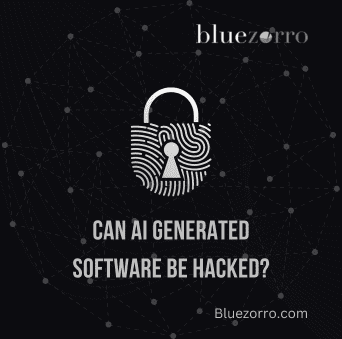Can Hackers Easily Breach Software Built with the Help of AI?
The rise of Artificial Intelligence (AI) has transformed software development. AI’s strengths in automation, data analysis, and process optimization have made it essential for building cutting-edge software. However, this growing presence of AI in software development has also sparked concerns about AI & security. This article explores a critical question: can hackers more easily exploit software built with the help of AI?
Introduction to AI in Software Development
The rise of AI technologies like machine learning and natural language processing has transformed software development. These AI-powered algorithms can significantly improve the development process by streamlining tasks, while also enhancing the user experience and overall software performance. From chatbots and recommendation systems to the development of autonomous vehicles and even cybersecurity tools, AI’s applications are rapidly diversifying across numerous industries, highlighting the growing importance of AI & security.
Understanding the Role of AI in Software Security
While AI offers numerous benefits to software development, its integration also raises security concerns. One of the primary roles of AI in software security is to identify and mitigate potential threats. AI algorithms can analyze patterns in user behavior, detect anomalies, and predict security breaches before they occur. Additionally, AI-powered systems can automate security protocols, such as intrusion detection and threat response, making them more efficient and proactive.
Potential Vulnerabilities in AI-Integrated Software
Despite its capabilities, AI-integrated software is not immune to security vulnerabilities. Several factors contribute to the susceptibility of AI-driven systems to hacking and exploitation:
Lack of Transparency in AI& Security Algorithms
Many AI algorithms operate as black boxes, meaning their decision-making processes are not transparent or easily interpretable. Hackers can exploit this lack of transparency by manipulating input data to deceive AI systems or bypass security measures.
Data Poisoning and Manipulation
AI algorithms rely on training data to learn and make predictions. If attackers can inject malicious data into the training dataset, they can manipulate the behavior of AI models and compromise the integrity of software systems.
Adversarial Attacks
Adversarial attacks involve deliberately perturbing input data to deceive AI algorithms and cause them to make incorrect predictions. These attacks can lead to security breaches in AI-driven software, particularly in areas such as image recognition, natural language processing, and autonomous systems.
Real-Life Examples of AI-Related Security Breaches
Several high-profile incidents have highlighted the security risks associated with AI-integrated software. For example, in 2017, researchers demonstrated how adversarial attacks could trick AI-powered image recognition systems into misclassifying objects. Similarly, instances of data poisoning have led to the compromise of machine learning models in cybersecurity applications, allowing attackers to evade detection mechanisms and infiltrate networks.
Mitigation Strategies for Securing AI-Driven Software
To address the security challenges posed by AI-integrated software, organizations must implement robust mitigation strategies:
Regular Security Audits and Updates
Continuous monitoring and auditing of AI algorithms and software systems can help identify vulnerabilities and weaknesses. Regular updates and patches should be applied to address emerging threats and enhance security measures.
Implementing Robust Encryption Techniques
Encrypting sensitive data and communications within AI-driven software can safeguard against unauthorized access and data breaches. Strong encryption algorithms and secure communication protocols should be employed to protect user privacy and prevent information leakage.
Educating Developers and Users About AI Security Risks
In the world of AI, security can’t be an afterthought. Everyone involved, from the developers building the technology to the people using it and the companies profiting from it, needs to understand the potential security risks of AI. To address this, we need more training and resources that highlight how to bake strong security practices right into the development and deployment of AI software. By making AI & security a priority, we can ensure this powerful technology is used safely and effectively.
The Future of AI-Driven Software Security
As AI continues to advance and evolve, so too will the challenges and opportunities in securing AI-driven software. Innovations in AI cybersecurity, such as adversarial robustness techniques and explainable AI, will play a crucial role in enhancing the resilience of AI-integrated software against emerging threats.
Conclusion
AI & security go hand in hand when it comes to AI-powered software. While AI offers exciting possibilities for development and innovation, it also introduces new security concerns. Hackers can target vulnerabilities in this software through methods like adversarial attacks (tricking the AI) or manipulating data. However, the good news is that organizations can take steps to mitigate these threats. Implementing strong security measures, conducting regular audits, and educating everyone involved about AI security risks are all crucial for safeguarding software systems built with AI.
Ready to fortify your AI-powered software against hacking risks? Contact us at Bluezorro or connect with us on LinkedIn to explore advanced security solutions


